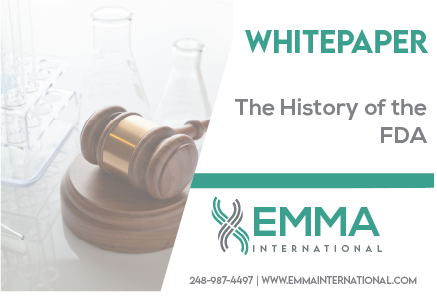One of the oldest protection agencies in the US federal government, the Food and Drug Administration’s modern regulatory functions began with the pass of the 1906 Pure Food and Drugs Act, a law that was a quarter-century in the making. Before then, the federal government utilized chemical analysis to monitor the safety of products, specifically agricultural products throughout the US; this was a responsibility that was inherited by the Department of Agriculture in 1863 and later by the current FDA. Since its beginning in the early 19th century, the FDA has authored and passed economic, political, social, and legal amendments and bills in the US. Examining the history of the FDA and these changes demonstrate the evolving role that the FDA has played in promoting general safety and health of the public, as well as illustrating the history of how the US evaluates current regulatory affairs and challenges.
Get the Culture and Medical Device Quality Whitepaper
Fill out the form below, and the webinar will get sent directly to your inbox.





